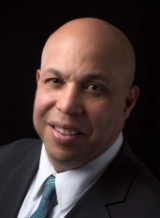Duff: Wyoming's Strange Workers' Compensation Non-Relationship With Wal-Mart
Thursday, July 5, 2018 | 0
More from my excursion writing a Wyoming workers’ compensation treatise.

Michael C. Duff
Wyoming’s largest private sector employer, Wal-Mart, is not covered by the state’s workers’ compensation act. Why? Because it is not engaged in an “extrahazardous” employment.
Unlike any other state in the nation, the Wyoming statute compulsorily applies to extrahazardous employment and to non-extrahazardous employment only when employers opt in to the statute.
The application of the statute to only extrahazardous employment is in fact dictated by the state’s Constitution, which does not permit limitations on personal injury damages except in the case of workers’ compensation, as carefully defined and separately authorized by the state Constitution.
Because that authorization (for a monopolistic) workers’ compensation fund pertains only to extrahazardous employments, mandatory workers’ compensation for non-extrahazardous employments is unconstitutional. (An echo of prairie populism).
But the story gets stranger. Although a few states continue to have vestigial references to extrahazardous employments, those provisions have — to put it in the words of the Larson’s treatise — “no substantial operative importance.”
In contrast, Wyoming’s extrahazardous employment character is fundamental. Employers are defined in terms of their participation in extrahazardous employments, as noted in the previous paragraph. Employees are those employed by employers engaged in extrahazardous employment. You get the picture.
Well, what’s a state to do with a statute appearing to cover an extremely limited segment of the workforce? I’ll tell you what I would do: I’d get the Constitution amended and then amend the statute to very broadly cover work.
But that’s not what Wyoming did. Over the decades, it expanded the definition of “extrahazardous.” Many, many employments that you and I would not think of as extrahazardous are defined as such now as a matter of law. And not exactly transparently so.
Extrahazardous employment is defined by reference to several “codes” from the North American Industry Classification System (NAICS) manual. You think you have Protz problems? Here, a private manual seems on the surface to be defining the jurisdiction of the act. I’d call that a delegation issue.
I have it on good authority that once upon a time, department store-type retail employers (there are several different kinds of “retail” coded under NAICS) were included in the system as extrahazardous. Then, allegedly, Wal-Mart lobbied the Legislature to remove this type of retail establishment from extrahazardous designation.
The Legislature agreed. Wal-Mart declined to opt in, but other similar retailers opted in. Experienced hands tell me that things may be yet more complicated than I’ve explained. But this is all I can get my head around now.
I’m still not done. Whatever else this system is, it is one in which the largest private sector employer in the state is not covered (including, by the way, employees at a large Wal-Mart warehouse distribution center in Cheyenne).
Well, what does a worker do if injured? This is not as bad as the overruled Oklahoma structure. You’ll recall that there, the plan was to allow employers opting out of the system to utilize alternative plans, and in the process employees received neither workers’ compensation coverage nor could they bring a tort suit.
In Wyoming, employees of non-covered employers can bring a tort suit, so the quid pro quo is maintained to that extent. But many (most?) employees “agree” to participate in the Wal-Mart alternative benefit plan, for all the obvious reasons.
You will no doubt recall that such alternative plans are necessarily governed by the Employee Retirement Income Security Act of 1974. Under ERISA, an employer is not required to pay any specific level of indemnity or medical benefits. The federal courts, at best, will require that the employer’s plan pay what the employer promised (and I am also reliably informed that not nearly enough is even promised under the plans).
Any state lawsuits for amounts above what the alternative benefit plan promised to pay are pre-empted by ERISA. This is the system applicable to the largest private sector employer in my state.
We had Oklahoma opt out. We still have Texas opt in. And to that list you can add Wyoming opt in.
Michael C. Duff is associate dean for student programs and external relations, and Centennial Distinguished Professor of Law at the University of Wyoming College of Law. This entry is republished from the Workers' Compensation Law Professors blog, with permission.






Comments